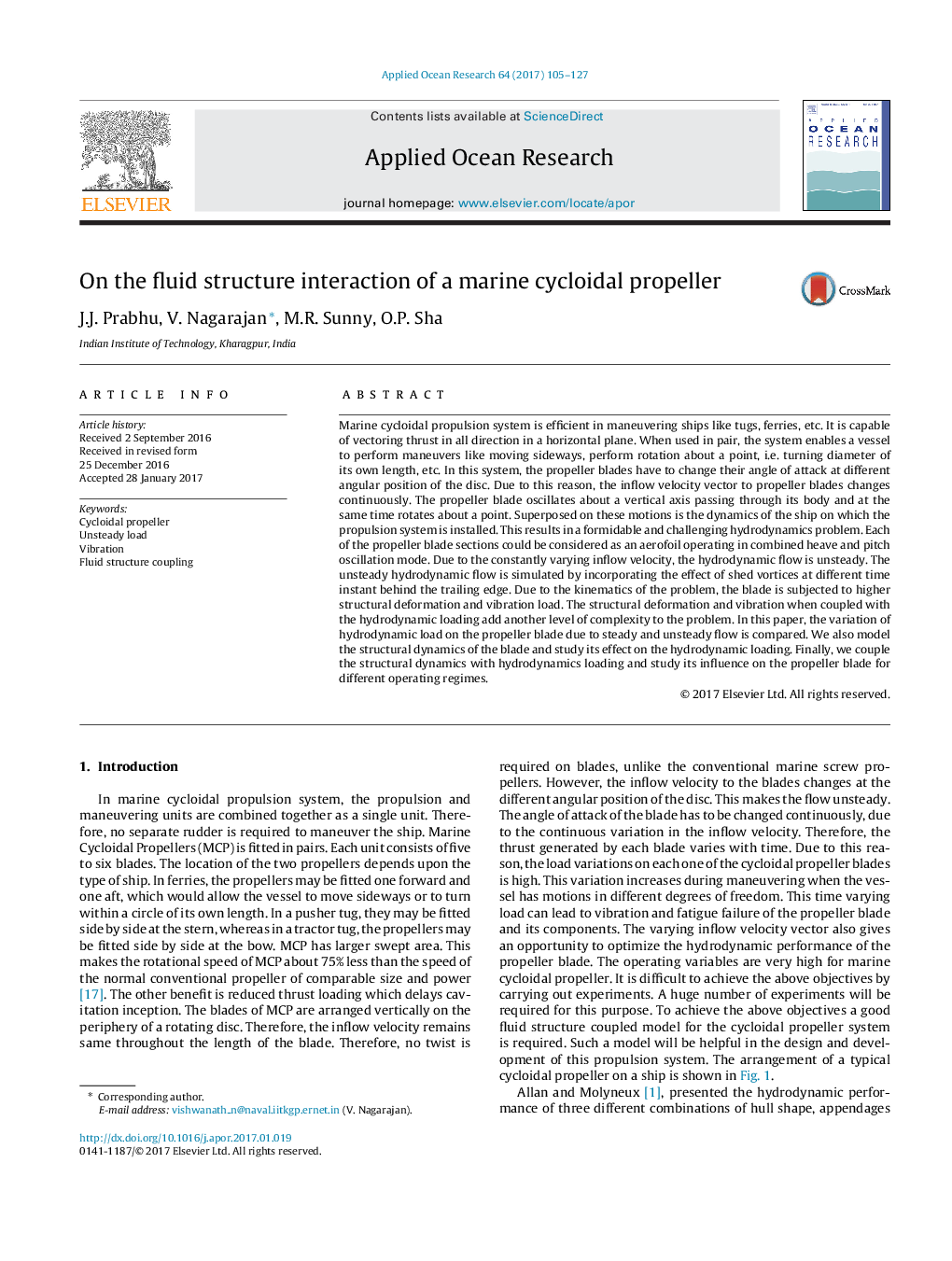| Article ID | Journal | Published Year | Pages | File Type |
|---|---|---|---|---|
| 5473186 | Applied Ocean Research | 2017 | 23 Pages |
Abstract
Marine cycloidal propulsion system is efficient in maneuvering ships like tugs, ferries, etc. It is capable of vectoring thrust in all direction in a horizontal plane. When used in pair, the system enables a vessel to perform maneuvers like moving sideways, perform rotation about a point, i.e. turning diameter of its own length, etc. In this system, the propeller blades have to change their angle of attack at different angular position of the disc. Due to this reason, the inflow velocity vector to propeller blades changes continuously. The propeller blade oscillates about a vertical axis passing through its body and at the same time rotates about a point. Superposed on these motions is the dynamics of the ship on which the propulsion system is installed. This results in a formidable and challenging hydrodynamics problem. Each of the propeller blade sections could be considered as an aerofoil operating in combined heave and pitch oscillation mode. Due to the constantly varying inflow velocity, the hydrodynamic flow is unsteady. The unsteady hydrodynamic flow is simulated by incorporating the effect of shed vortices at different time instant behind the trailing edge. Due to the kinematics of the problem, the blade is subjected to higher structural deformation and vibration load. The structural deformation and vibration when coupled with the hydrodynamic loading add another level of complexity to the problem. In this paper, the variation of hydrodynamic load on the propeller blade due to steady and unsteady flow is compared. We also model the structural dynamics of the blade and study its effect on the hydrodynamic loading. Finally, we couple the structural dynamics with hydrodynamics loading and study its influence on the propeller blade for different operating regimes.
Keywords
Related Topics
Physical Sciences and Engineering
Engineering
Ocean Engineering
Authors
J.J. Prabhu, V. Nagarajan, M.R. Sunny, O.P. Sha,
